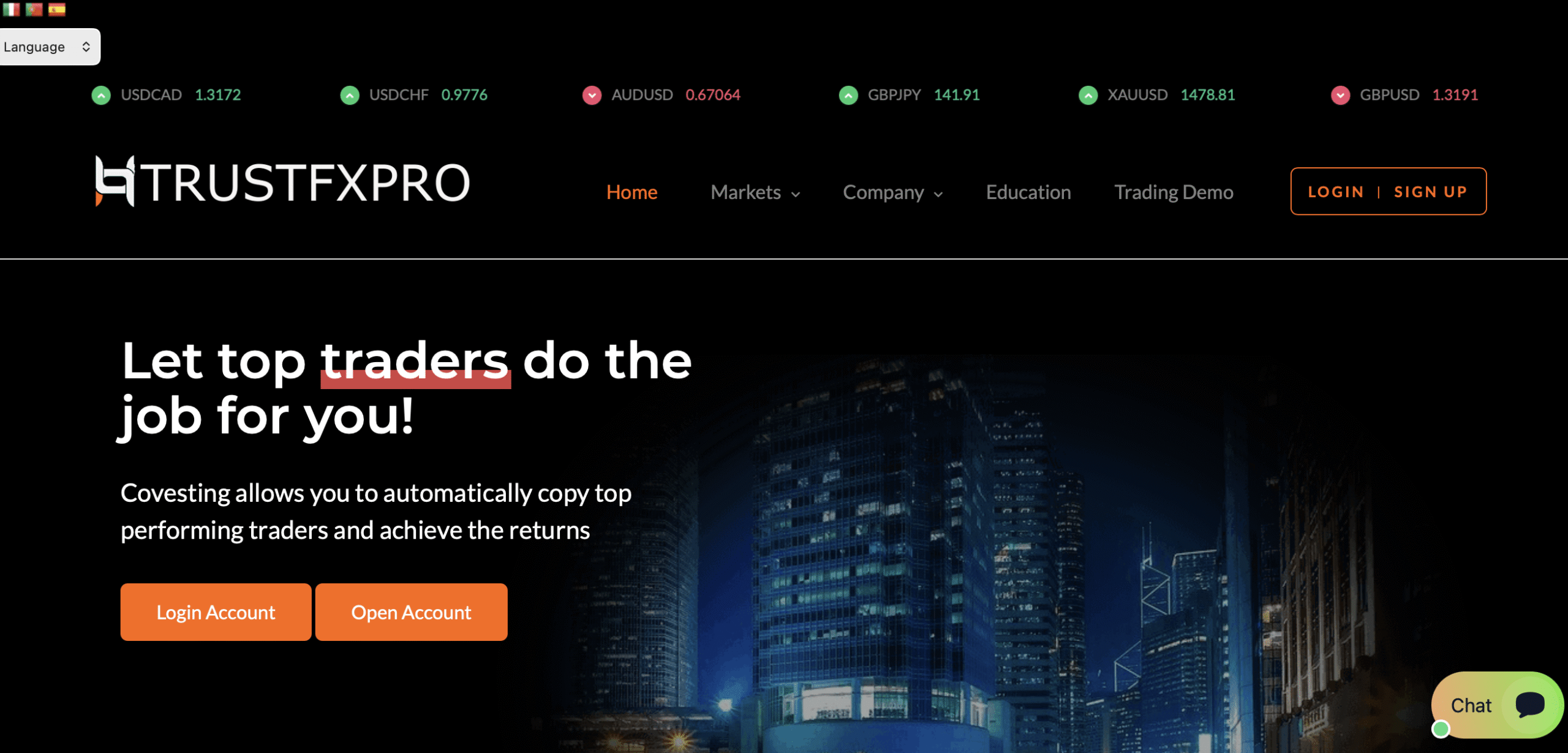Slick design and confident claims can make any online trading site feel legitimate. Trustfxpro, operating via trustfxpro.com, promotes fast onboarding, expert guidance, and attractive, steady returns. Multiple warning signs, however, align with patterns seen across high‑risk, scam‑adjacent operations. This review explains those red flags, how schemes like this typically work, and what safer alternatives look like.
What Trustfxpro Claims
Common marketing hooks include:- “Guaranteed” or “consistent” profits across forex, crypto, or indices
- “VIP signals,” “AI strategies,” and “professional account managers”
- “Instant withdrawals” and “bank‑grade security”
- Tight spreads, low fees, and priority tiers
Core Red Flags
- Lack of recognized regulatory oversight
- High‑pressure prompts to deposit or “upgrade”
- Unrealistic returns or guaranteed outcomes
- Opaque ownership, legal entity, and contact details
- Withdrawal barriers, surprise “release fees,” and shifting rules
- Bonus traps with restrictive turnover requirements
- Dubious testimonials and unverifiable awards
Regulation and Licensing: Verify First
Credible brokers operate under reputable regulators such as:- FCA (UK), ASIC (Australia), CySEC (Cyprus)
- IIROC (Canada), CFTC/NFA (US), MAS (Singapore)
- No regulator named, or a vague “international license”
- Regulator logos without a corresponding, searchable entry
- License numbers that belong to a different company
- Incorporation in lenient jurisdictions with weak client protections
How Schemes Like This Commonly Operate
- Outreach and hype: Unsolicited messages, social ads, or “VIP signal” invitations with time‑sensitive opportunities.
- Frictionless onboarding: Quick sign‑up and immediate deposit prompts, often sweetened by “bonus boosts.”
- Early wins: Dashboards show fast gains; sometimes a small withdrawal works to build confidence.
- Escalation: “Account managers” nudge larger deposits to unlock “institutional strategies,” higher tiers, or special leverage.
- Withdrawal friction: Requests stall; new hurdles appear—“compliance holds,” “release fees,” “insurance,” or “tax prepayment.”
- Rebrand or vanish: Accounts freeze, support goes quiet, or domains change while activity shifts to a new name.
Website and Communication Warning Signs
- Vague legal identity: Missing registered company details, untraceable addresses, or PO boxes only.
- Inconsistent branding: Multiple names or domains used interchangeably, complicating accountability.
- Boilerplate policies: Copy‑pasted terms, contradictory clauses, or missing client protections.
- Pushy messaging: Countdown timers, “limited slots,” and urgent calls from “advisors.”
- Unverified accolades: “Best Broker” badges without credible, independent sources.
Deposits, Bonuses, and Withdrawal Barriers
- Bonus restrictions: Deposit “bonuses” tied to strict turnover requirements that block withdrawals.
- Crypto‑centric funnels: Irreversible payments reduce options if disputes arise.
- Surprise charges: “Release fees,” “compliance costs,” “insurance,” or “taxes” demanded before withdrawals process.
- Moving goalposts: After meeting one condition, new ones appear. Reputable firms don’t invent fees post‑deposit.
Platform Integrity and Data Transparency
Questionable platforms often use white‑label dashboards that look advanced but can be centrally manipulated. Indicators include:- Price anomalies: Quotes diverging from widely available market data
- One‑way slippage: Executions consistently unfavorable to users
- Convenient “maintenance”: Outages during volatility or after withdrawal requests
- Unverifiable analytics: Charts and “profit” figures that can’t be confirmed outside the platform
Testimonials, Reviews, and Social Proof
- Stock images: Recycled photos for “client success stories”
- Only perfect ratings: Glowing reviews on obscure sites without balanced critique
- Coordinated praise: Identical testimonials across new accounts and channels
- Silence in reputable communities: Minimal presence on established trading forums or comparison platforms
Tactics That Target Newer Traders
- Authority borrowing: Vague references to banks, “regulated partners,” or custodians without verifiable details
- Jargon overload: Complex terms used to intimidate rather than inform
- Relationship pressure: Friendly “advisors” who escalate urgency near deposit deadlines
- Fantasy outcomes: “Risk‑free profits,” daily fixed returns, or insider access
Safer Alternatives: What Good Looks Like
- Verifiable regulation: Licenses you can confirm directly in official registries
- Transparent pricing: Clear spreads, commissions, swaps, funding and withdrawal costs
- Multiple payment methods: Bank transfers and cards with standard protections, not crypto‑only funnels
- Independent platforms and data: Access to widely used terminals and pricing you can cross‑check
- Accountable support: Real contact channels, identifiable teams, and timely responses
- Realistic education: Risk disclosures, tutorials, and guidance focused on capital preservation
Practical Checks Before You Commit
- Confirm the license: Verify the exact legal entity and number in the stated regulator’s database.
- Validate the company: Review official registries for address, directors, and filings; ensure names match across the site and documents.
- Test early: If trialing a platform, start small and initiate a withdrawal immediately to gauge friction.
- Compare data: Cross‑check quotes and execution with a known regulated broker to spot discrepancies.
- Read the fine print: Focus on bonus terms, turnover requirements, and any “release,” “insurance,” or “administrative” fees.
- Choose robust payment channels: Prefer methods with standard protections available in your region.
If You Already Opened an Account
- Keep records: Save emails, chat transcripts, statements, and screenshots of balances and withdrawal attempts.
- Pause deposits: Decline requests to add funds to “unlock” withdrawals or “cover fees.”
- Update security: Change passwords and enable multifactor authentication, especially if credentials were reused.
Frequently Asked Questions
- Can a broker be legitimate without regulation? In practice, reputable brokers operate under recognized oversight. Without it, client protections are limited and risks increase.
- Are guaranteed returns ever realistic? Markets are uncertain. Promises of fixed or guaranteed profits are a classic red flag.
- Why do some platforms push crypto deposits? Crypto transactions are fast and irreversible, which can be misused to avoid standard consumer protections.
- What’s a safer starting point for beginners? Use a demo with a regulated broker, learn order types and risk controls, and progress gradually with small amounts.

